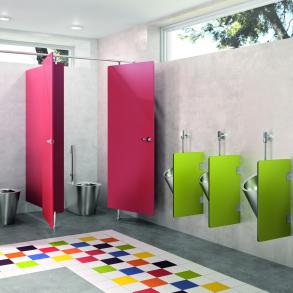One of the most fundamental elements of any washroom is the flushing system. Removing waste water from the toilet in an efficient manner requires a weight of water to be forced through, carrying waste away into the sewer. It’s an operation that requires water storage, and release. Here we explore a few ways of doing just that.
What is a flush valve?
A flush valve is a device that controls a water tight seal in the toilet cistern. When opening the valve, the seal is lifted to release several litres of water that will fall down with gravity, through the toilet and wash waste away. When the valve is closed, the cistern will refill with more fresh water. This flow of water is then switched off when the cistern is full, controlled by a ballcock valve, a sensor, or cutoff valve.
For more information, you can read our earlier post - How Does A Flush Valve Work.

Types of flush control
Whether your cistern is mounted on the back of your toilet (close coupled toilet) or concealed within a DUCT set, the system of operation is the same. However, there are a number of ways in which the user can control the flush activation. Of course there is the classic lever flush control we will all be familiar with, as well as the push button flush. Push button flushes can be mounted into DUCT sets to allow toilet flush controls on a vertical surface. This is also the prime location for sensor activated flush kits. This is where an infra red sensor is installed behind the toilet or urinal on the wall. When the beam is broken for a set period of time, the valve will release and the cistern will empty, cleaning the contents of the toilet away.
How to make a toilet flush stronger
If you are having problems with your toilet flushing system, you might want to check for blockages in the cistern. If you have a ballcock valve, make sure that the valve isn’t jammed. This can result in too little, or too much water entering the cistern. If water is continually running into the toilet bowl, this is a sign that the seal on your cistern or flush valve is not tight enough. If you have used devices to reduce the amount of water used in a flush, but are finding the volume of water not strong enough to conduct a flush, consider removing them.
Read our earlier feature on How To Change A Toilet Flush Kit.
If you would like further advice on toilet flushing systems, or to speak with one of the team about our supply and fit services, please get in touch on 01202 650900.








